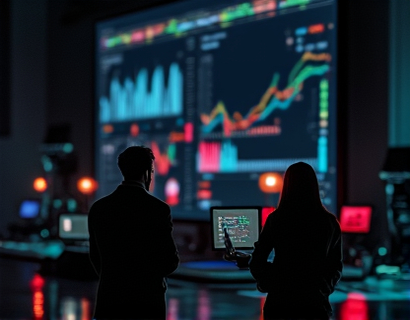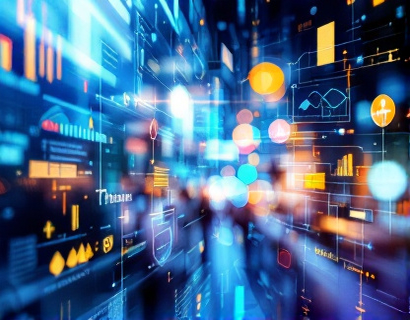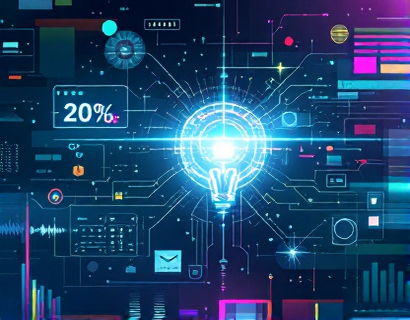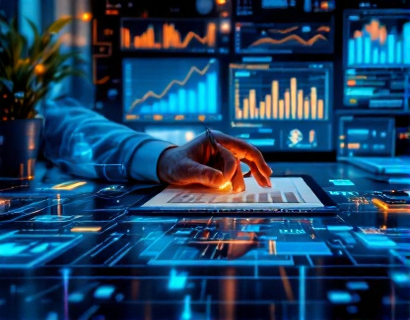Revolutionizing Digital Transformation: The Synergy of Crypto and AI
The intersection of cryptocurrency and artificial intelligence (AI) is catalyzing a new era of digital transformation, offering unprecedented opportunities for connectivity, growth, and enhanced user engagement. This fusion is not merely a technological advancement but a paradigm shift that is redefining how we interact with digital ecosystems. As we delve into this topic, it's essential to understand the foundational elements that make this synergy possible and the profound impact it has on various sectors.
Understanding Cryptocurrency and AI
Cryptocurrency, often referred to as digital or virtual currency, operates on a decentralized network known as blockchain. This technology ensures transparency, security, and immutability in transactions, eliminating the need for intermediaries such as banks. On the other hand, AI involves the simulation of human intelligence processes by machines, particularly computer systems. These processes include learning (the acquisition of information and rules for using it), reasoning (using rules to reach approximate or definite conclusions), and self-correction. When combined, these technologies create a powerful toolset for innovation.
The Role of Blockchain in AI
Blockchain technology plays a crucial role in the AI ecosystem by providing a secure and transparent framework for data management and sharing. AI models require vast amounts of data to learn and improve, and blockchain ensures that this data is tamper-proof and verifiable. Smart contracts, self-executing contracts with the terms directly written into code, can automate and enforce data sharing agreements, reducing fraud and increasing efficiency. This synergy ensures that AI systems can access high-quality, reliable data, which is essential for their development and performance.
Enhanced Data Security and Privacy
One of the most significant benefits of combining crypto and AI is the enhancement of data security and privacy. Blockchain's decentralized nature means that data is not stored in a single location, making it less vulnerable to cyber attacks. Additionally, cryptographic techniques used in blockchain can secure sensitive data, ensuring that only authorized parties can access it. For AI systems that handle personal and sensitive information, this level of security is paramount. Privacy-preserving AI algorithms, such as those using homomorphic encryption, allow data to be processed in its encrypted form, further safeguarding user information.
Decentralized AI Platforms
Decentralized AI platforms are emerging as a revolutionary approach to AI development and deployment. These platforms leverage blockchain to create a distributed network where AI models and data are shared and managed collectively. This decentralization not only democratizes access to AI technologies but also promotes collaboration and innovation. Developers can contribute to and benefit from a shared pool of AI resources, reducing barriers to entry and fostering a more inclusive ecosystem. Moreover, decentralized AI platforms can ensure fair compensation for data providers and model creators, aligning incentives and promoting sustainable growth.
Improved User Engagement through Personalization
AI-driven personalization is a key factor in enhancing user engagement across various digital platforms. By analyzing vast amounts of user data, AI algorithms can predict preferences and behaviors, tailoring content and experiences to individual needs. This level of personalization not only improves user satisfaction but also increases engagement and retention. When combined with blockchain, this process becomes more transparent and secure, as users have control over their data and can choose how it is used. This empowerment fosters trust and loyalty, crucial elements in today's digital landscape.
Tokenization of AI Services
Tokenization, a process enabled by blockchain, involves converting rights to an asset into a token that can be traded on a blockchain. In the context of AI, this means that AI services and models can be tokenized, creating a new economy where these assets can be bought, sold, and traded. This tokenization not only provides a new revenue stream for AI developers but also makes AI more accessible to a broader audience. Small businesses and individuals can now leverage advanced AI capabilities without the need for significant upfront investments, democratizing access to cutting-edge technology.
Supply Chain Optimization
The supply chain industry stands to benefit greatly from the integration of crypto and AI. Blockchain ensures transparency and traceability in supply chains, while AI optimizes operations through predictive analytics and automation. For instance, AI can predict demand patterns, optimize inventory levels, and streamline logistics, reducing costs and improving efficiency. Smart contracts on the blockchain can automate payments and ensure compliance with contractual obligations, further enhancing the reliability of supply chain processes. This combination not only boosts operational efficiency but also builds trust among all stakeholders involved.
Financial Inclusion and Microfinance
Crypto and AI are also playing a pivotal role in promoting financial inclusion and supporting microfinance initiatives. Traditional financial systems often exclude a significant portion of the global population, particularly in underserved regions. Blockchain-based financial services can provide secure and accessible banking solutions, while AI can assess creditworthiness and manage risks more effectively. This synergy enables microloans and other financial services to reach individuals who previously had no access to formal banking systems. The transparency and efficiency brought by these technologies can significantly reduce fraud and operational costs, making financial services more viable and sustainable.
Enhanced Fraud Detection and Prevention
Fraud remains a persistent challenge in both cryptocurrency and traditional financial systems. The combination of AI and blockchain offers robust solutions to detect and prevent fraudulent activities. AI algorithms can analyze patterns and anomalies in transaction data, identifying potential fraud in real-time. Blockchain's immutable ledger ensures that once a transaction is recorded, it cannot be altered, providing a tamper-proof record. This dual approach not only enhances security but also builds trust among users, encouraging broader adoption of digital financial services.
Challenges and Considerations
Despite the numerous benefits, the integration of crypto and AI is not without challenges. Regulatory uncertainties and the need for standardization are significant hurdles that must be addressed. The rapid evolution of both technologies requires flexible and forward-thinking regulations that can adapt to new developments. Additionally, the environmental impact of blockchain, particularly proof-of-work systems, is a concern that needs to be mitigated through more sustainable consensus mechanisms. Ensuring user education and awareness is also crucial to foster trust and adoption.
Future Prospects
The future of crypto and AI is bright, with ongoing innovations poised to unlock new possibilities. The development of more efficient blockchain protocols, such as proof-of-stake and layer-2 solutions, will address scalability and environmental concerns. Advancements in AI, including explainable AI and federated learning, will enhance transparency and privacy. The convergence of these technologies will continue to drive digital transformation, creating more intelligent, secure, and inclusive ecosystems. As the tech landscape evolves, the synergy between crypto and AI will remain a key driver of innovation and growth.
In conclusion, the fusion of cryptocurrency and AI is revolutionizing digital transformation by enhancing connectivity, growth, and user engagement. Through secure data management, decentralized platforms, personalized experiences, and optimized operations, this synergy is reshaping various industries and empowering users. As we move forward, embracing these technologies will be essential for staying competitive and relevant in the digital age.










































